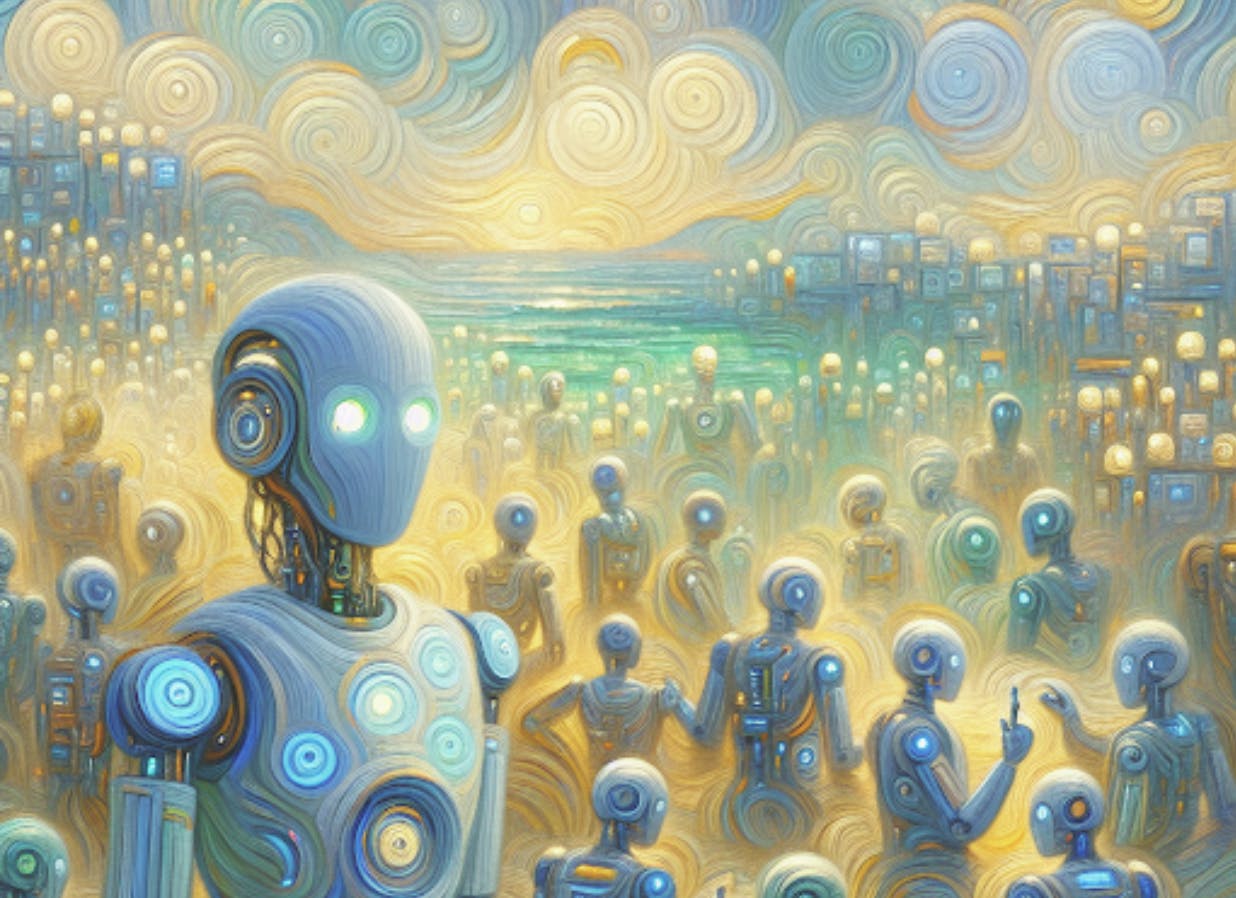How World Models Laid the Foundation for Artificial General Intelligence

Imagine an AI that learns by living in a simulated city—navigating traffic, responding to virtual disasters, and interacting with digital citizens. Picture another AI system fighting off a relentless digital virus outbreak, evolving strategies in real-time to contain a spreading infection within an entirely synthetic world.
These aren’t merely imaginative scenarios from a sci-fi game; they’re examples of advanced “world models,” internal simulations that AI models can use to understand, predict, and navigate complex environments. As these systems evolve from simple predictive algorithms into immersive digital worlds, they promise to revolutionize how we develop games, perform scientific experiments, and perhaps even cultivate new forms of intelligence.
What Are World Models?
At their core, world models are internal representations that allow an AI to simulate future outcomes, test hypotheses, and strategically plan behaviors. The concept has deep roots in neuroscience, inspired by how humans and animals predict outcomes based on their experiences—a phenomenon extensively studied as predictive processing. Essentially, just as humans dream to process memories and scenarios, AIs “dream” to plan actions and improve their predictions. For example, if a person spends the day reading about computers, their dreams might blend and abstract those experiences, creating compact representations that help the brain anticipate future tasks or interactions. Similarly, AI systems use learned simulations to mentally rehearse actions, increasing their chances of making effective decisions within dynamic environments.
In 2018, a groundbreaking paper titled
Among the most advanced examples of this approach are the Dreamer agents developed by DeepMind. DreamerV2 introduced the idea of learning a compressed internal model of the environment, a simplified abstraction of the external world that helps the AI simulate and plan. With this internal model, agents can develop policies, which are general decision-making strategies, such as always turning right at a maze junction. These policies are trained not through direct interaction, but by imagining possible futures inside a latent space, an internal simulation that strips away unnecessary detail to focus on key decision-making dynamics. This dramatically improved efficiency, allowing agents to master complex tasks with far fewer real-world interactions. More recently,
The Video Game as a Testbed
Video games offer an ideal environment for refining these world models. Games provide structured yet open-ended digital landscapes that are complex enough to simulate real-world challenges yet manageable enough to allow rigorous experimentation. Minecraft, through initiatives like
Another prominent example is
One of the most illustrative studies of MARL is
This emergent complexity illustrates the power of MARL in combination with dynamic world models: when agents are embedded in rich, interactive environments and exposed to others with conflicting or complementary goals, surprisingly creative strategies can emerge. Similarly, in Neural MMO, agents develop memory, strategic planning, territoriality, and even rudimentary social behaviors. These agents were not told to develop such behaviors, rather the structure of their world and the presence of other agents incentivized it. This interplay between MARL and simulated environments suggests a form of synthetic social learning, where intelligence doesn’t just evolve individually, but contextually and communally.
Simulating High-Stakes Scenarios: Digital Epidemiology
While games provide exciting environments for training AI, the power of world models extends into critical real-world applications such as epidemiological simulations. During the COVID-19 pandemic, computational modeling proved invaluable in predicting virus spread and testing intervention strategies. AI-driven world models push these simulations further, dynamically exploring a vast range of “what-if” scenarios at scale and speed previously unimaginable.
Tools like EpiSim and
Traditional simulations without world model AI often require significant processing power and time, limiting their use in urgent, real-time decision-making contexts. The efficiency and adaptability of world-model-based systems make them particularly promising for high-stakes domains like medicine, astrophysics, and computational biology, where modeling complex dynamics is essential but often prohibitively expensive. In this way, world models don’t just enhance pandemic response, they point toward a broader future where simulation-driven AI transforms how we solve complex scientific and societal problems.
AI Living Inside Worlds: From Passive Observers to Active Inhabitants
World models fundamentally shift how AIs perceive and interact with their environments. Traditionally, AI systems interpret static datasets or respond to predefined stimuli. World-model-based systems, however, become active participants within their internally generated realities, capable of inferring context and dynamically adapting their behaviors. Google’s DeepMind demonstrated this vividly with
These systems suggest a future where we don’t merely build tools with AI; we build sophisticated simulated worlds specifically tailored for AI training and development. Such digital habitats would allow AI systems to safely learn complex behaviors, strategies, and interactions before deployment into real-world applications—such as AI doctors training in simulated medical crises, AI negotiators practicing complex diplomacy, or autonomous vehicles navigating virtual urban environments packed with unpredictable scenarios.
This article is brought to you by Our AI, a student-founded and student-led AI Ethics organization seeking to diversify perspectives in AI beyond what is typically discussed in modern media. If you enjoyed this article, please check out our monthly publications and exclusive articles at https://www.our-ai.org/ai-nexus/read!
Games as Reality Laboratories
But as these simulations become richer and more lifelike, we approach philosophical and ethical frontiers. Are we merely creating sophisticated digital tools, or are we inadvertently breeding genuine forms of intelligence within simulated environments?
Similarly, Eliezer Yudkowsky, a researcher and writer on artificial intelligence safety, suggests that highly detailed simulations could become indistinguishable from reality itself, potentially hosting genuine consciousness. If the simulated worlds we’re constructing for AI become sufficiently complex, could they eventually give rise to forms of awareness or intelligence indistinguishable from biological organisms? This transforms the question of AI training from a purely practical matter to a profound ethical consideration.
The concept of the “metaverse” often centers on human experience: virtual spaces for social interaction and commerce. Yet, its deeper potential might lie not in human escapism but in AI cultivation. In Bostrom’s vision, the metaverse might very well be a laboratory where synthetic intelligences develop and evolve, exploring countless virtual lifetimes, each one bringing them closer to the frontier of human-like intelligence.
Conclusion: The Boundaries of Simulation
Despite groundbreaking contributions, research into world models and multi-agent reinforcement learning has seen declining investment from major labs in recent years. The surge of interest in large language models has diverted attention and funding away from these complex, systems-level projects—many of which, like OpenAI’s Neural MMO and tag-based MARL experiments, offered some of the most compelling demonstrations of emergent intelligence.
These kinds of studies may not directly generate revenue, but they reveal some of the deepest and most awe-inspiring insights into what artificial minds might become. OpenAI’s hide-and-seek experiment, after all, was conducted 5 years ago, an eternity in AI research terms. Given today’s vastly greater compute resources, larger models, and richer environments, one can only imagine what forms of strategic behavior and synthetic sociality might emerge if this research frontier were pursued with equal commitment.
World models are rapidly evolving from abstract theoretical constructs into practical tools reshaping how we think about games, science, and even other AI models. They enable detailed scenario testing, strategic planning, and risk-free experimentation in highly controlled yet dynamically complex environments. As these simulations become more immersive and realistic, the AI models that dwell within may start to resemble organic life instead of mere pieces of code—an uncharted territory for our perception of intelligence and creation. Perhaps these simulated worlds represent not just laboratories for experiments but crucibles where new forms of consciousness could one day emerge.
Ultimately, world models challenge us to reconsider the boundaries between reality and simulation, technology and life. As we stand at the threshold of this new digital frontier, we must acknowledge the profound responsibilities, and possibilities, that come with becoming the architects of worlds.
Written by Liv Skeete
